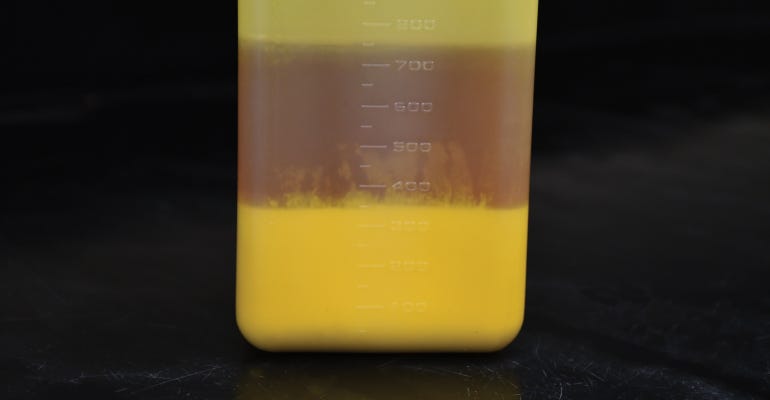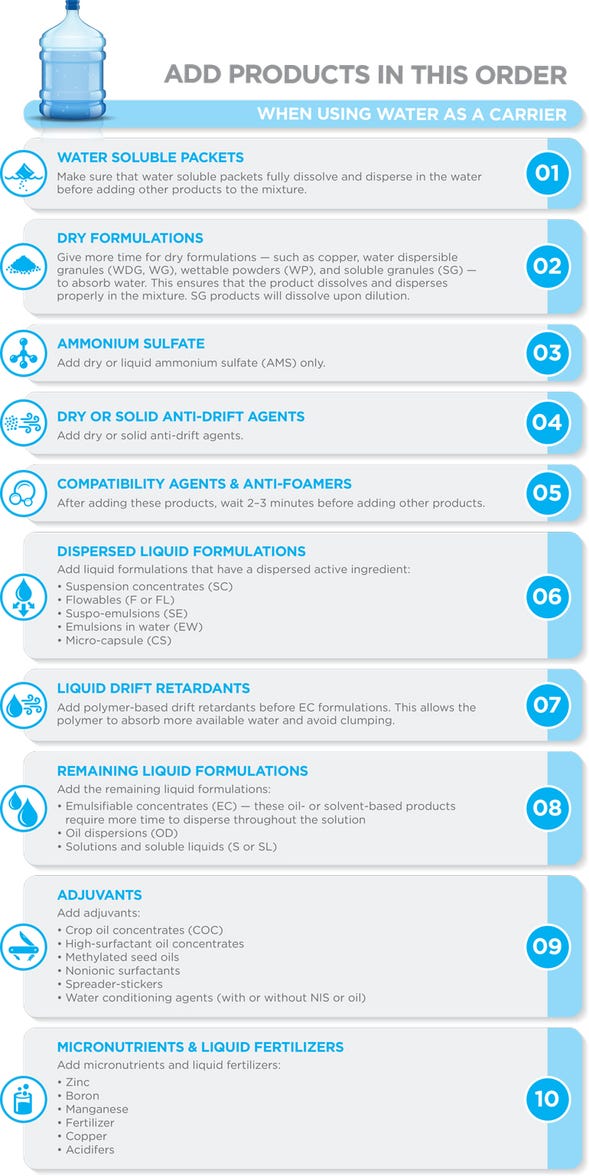
Would you send a new employee to the barn lot to mix a load of spray mix with water and herbicides when he or she had never done it before? Probably not. On the flip side, have you done it so often that you could do it in your sleep? No need to read product labels or check out bulletins about incompatibility, right?
Even those who would never send a rookie to do the job without training might fall into this second trap.
Instructions for preparing a spray tankmix properly apply to everyone, says Fred Whitford, Purdue University Pesticide Programs director. If you follow a step-by-step process, you can go whole seasons without issues. If you don’t, you may waste time and money cleaning gunk out of your tank and replacing lines, filters and nozzles, he explains.
Whitford laid out these instructions in Avoid Tank Mixing Errors, publication PPP-122, which is available at edustore.purdue.edu and ppp.purdue.edu.
Here are eight steps to follow to prepare herbicide mixtures when you’re using water as a carrier:
1. Read all product labels. Even if you’ve read the label before, read it again. Labels change as formulations change. Follow the mixing order specified on the label, even if it’s different than the mixing order described in this article.
2. Shake and mix products first. Some herbicides separate and settle out during storage. The product should be remixed in its original container before you pull any product from the container.

MIX 1ST: This jar of product illustrates how some herbicides can separate into parts in storage. Mix products before pouring or pulling from the container, even if it means using a tote remixer.

3. Ensure adequate water volume in the tank. Fill the tank 50% full of water before adding anything else to the tank. Otherwise certain herbicides may react and form globs of material within the tank.
4. Agitate throughout the mixing process. Never add multiple products to the inductor at the same time, Whitford emphasizes. Flush the inductor with clean water between products.
5. Follow a mixing order designed for products using a water carrier. The order will depend on types of formulations you’ve chosen. You may no longer use products with water-soluble packets, but if you do, make sure they dissolve fully before going to the next step. See the graphic below for more details.

6. Wait three to five minutes between products with dry formulations. There are various dry formulations, including wettable granules, designated as WG; soluble granules, or SG; and dry flowables, or DF. All of these must fully dissolve before you add another product.
7. Continue agitation as you finish filling with water. Keep agitation going until the mixture appears uniform. Getting the right amount of agitation is almost an art form — too much or too little can cause issues with inert ingredients.
8. Measure pH of spray solution and adjust if necessary. This was a well-kept secret until recently, Whitford says. Improper pH can impact mixing and herbicide performance. Follow label directions.
About the Author(s)
You May Also Like




